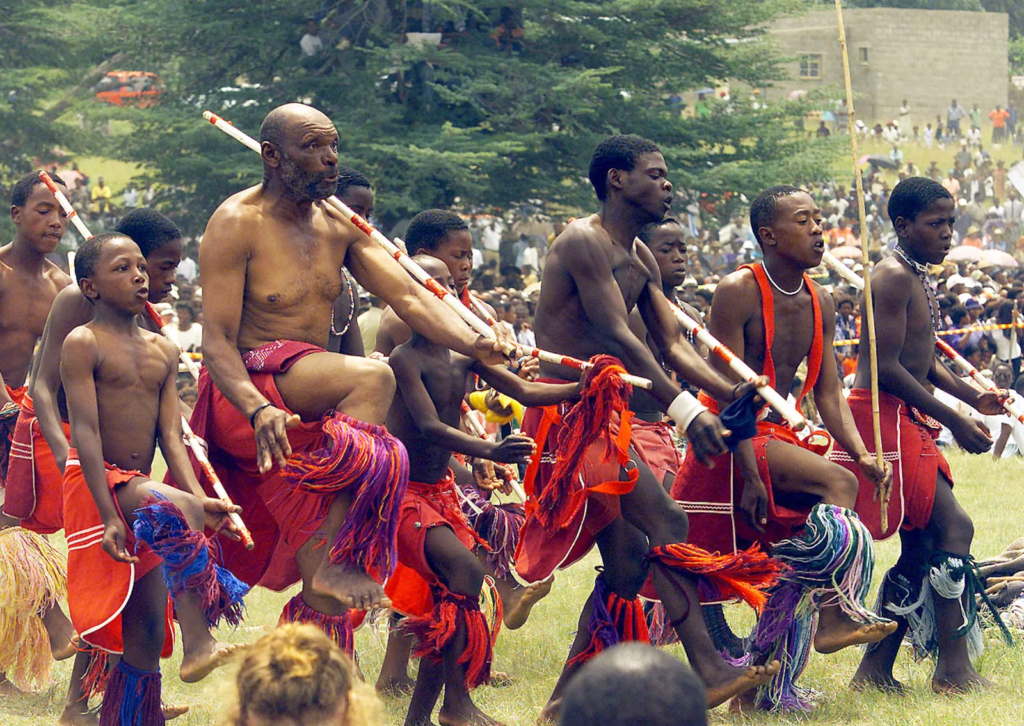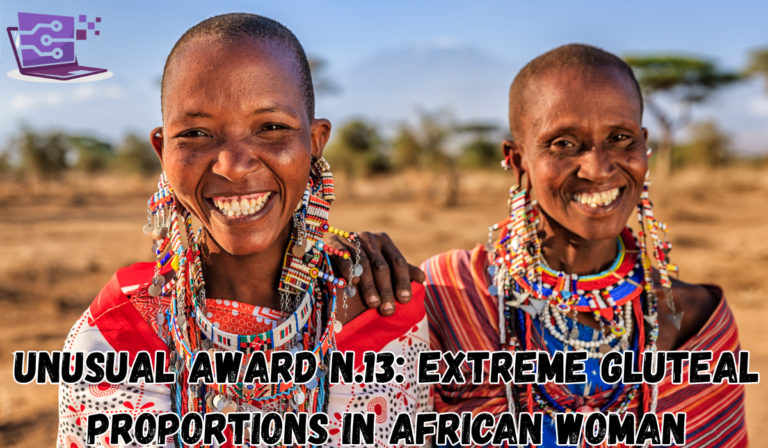Celebrating Uniqueness, One Curve at a Time
In a world bursting with standards, norms, and templates for beauty, nature often rebels—quietly sculpting outliers who defy ordinary expectations. This leads us to Unusual Award N.13: Extreme Gluteal Proportions in African Woman—an eccentric, fascinating celebration of genetics, culture, and evolution. This article takes a deep dive into this unusual recognition, its origins, its context, and why it sparks awe and dialogue across continents.
Let’s unpack the significance of this anatomical marvel, not through the lens of sensationalism, but through appreciation of diversity, cultural relevance, and the interplay of biology and beauty.
Origins of the “Unusual Awards” Phenomenon
“Unusual Awards” are fictional, tongue-in-cheek recognitions given to remarkable and often extreme human traits or accomplishments that fall far outside the average spectrum. Think Guinness World Records but focused on highly specific, highly unusual characteristics. The purpose isn’t to mock or fetishize, but to spotlight human diversity in ways that spark curiosity and conversation.
Unusual Award N.13: Extreme Gluteal Proportions in African Woman stands out, not just for the physical attribute it highlights, but for the deep roots this trait has in genetics, evolution, and African heritage.
Decoding the Award Title: What Makes This Unusual?
The title is a mouthful—“Unusual Award N.13: Extreme Gluteal Proportions in African Woman.” But each part carries weight:
- “Unusual Award N.13”: Indicates this is part of a larger series recognizing rare human traits.
- “Extreme Gluteal Proportions”: Highlights a body feature that surpasses common expectations in size, shape, and ratio.
- “In African Woman”: Pinpoints a cultural and genetic lineage known for this specific phenotypic expression.
Unlike plastic surgery-induced enhancements, these proportions are often natural and passed down through generations, especially among certain African ethnic groups.
The Genetics Behind Gluteal Development
Genetics play a significant role in body fat distribution. In many African populations, particularly in the southern regions, a condition called steatopygia is observed—marked by high fat accumulation in the buttocks without obesity elsewhere. This genetic trait is more pronounced in certain groups like the Khoisan women of Southern Africa.
But the uniqueness doesn’t stop at biology. It also intersects with:
- Hormonal distribution (especially estrogen)
- Body type inheritance
- Nutrition and metabolism
- Evolutionary pressures (e.g., childbearing, attraction signals)
The fusion of these factors makes Unusual Award N.13: Extreme Gluteal Proportions in African Woman not only biologically rare but evolutionarily intriguing.
Cultural Celebration of the Gluteal Form in African History

Far from being a modern fascination, the celebration of generous curves, especially the gluteal region, has deep roots in African cultures. From traditional dances that emphasize hip movements to ancient art and sculpture, the admiration of curvaceous forms predates modern fashion trends by centuries.
Historical Reference Points:
- The Venus of Willendorf, although not African, is often compared to early African fertility statues that celebrate exaggerated female features.
- In Zulu culture, “iSibaya” dances involve intense hip movements symbolizing fertility and strength.
- The Himba people in Namibia have cultural ceremonies that feature women with distinctive gluteal proportions as symbols of health and motherhood.
These are not merely aesthetic values—they are social, reproductive, and spiritual ideals woven into African identity.
When Nature Becomes News: Media Fascination
Modern media has taken keen interest in the topic, albeit often through a lens of sensationalism. Viral videos, documentary features, and social media discussions have featured African women with naturally extreme curves, sometimes even leading to international modeling contracts or medical studies.
But with fame comes controversy. There’s a fine line between appreciation and objectification. The challenge is to shift focus toward celebrating natural human variety—without turning individuals into spectacles.
How SEO Plays a Role:
The keyword “unusual award n.13: extreme gluteal proportions in african woman” has become a searchable phrase online, attracting curiosity-driven traffic. From curiosity stems conversation, and from conversation—hopefully—empathy.
Evolutionary Biology: Why Would This Trait Develop?
From a Darwinian standpoint, the development of prominent buttocks in certain African populations might have evolved due to:
- Signaling fertility: Curves indicate estrogen-rich body types and favorable conditions for childbirth.
- Temperature regulation: Fat storage in certain regions helps manage internal temperatures in hot climates.
- Survival advantage: In nomadic communities, where food may be scarce, storing fat in specific areas without general obesity can be a survival advantage.
Thus, the phenotype that wins Unusual Award N.13 may not be unusual at all in an evolutionary context—it’s simply nature doing its thing in the most optimized way possible for specific environments.
Real Women, Real Stories: Interviews and Testimonies
Let’s take a human-centered approach.
A Glimpse Into Lives
Nomvula, a 27-year-old from Botswana, shares:
“I’ve always had a big backside. It wasn’t always easy. In school, people stared. But as I got older, I realized it was something unique—something to be proud of.”
Aminata, from Sierra Leone, adds:
“People assume it’s surgery or photoshop, but this is my mother’s body, my grandmother’s body. It runs in our family. I embrace it now.”
Their stories ground the conversation. Behind Unusual Award N.13: Extreme Gluteal Proportions in African Woman are real people—living, laughing, and reclaiming narratives shaped by their own histories.
Fashion, Representation, and Modern Identity
Modern fashion is slowly catching up with natural diversity. Where once runways favored straight-lined silhouettes, today we see a rising inclusion of fuller-figured models. African women with unique proportions are breaking barriers in:
- Modeling (e.g., curve-exclusive agencies)
- Fitness and body-positive influencers
- Afrobeats music videos and dance culture
- Traditional vs. modern hybrid fashion lines
The global influence of African culture has helped bring body diversity to the forefront of mainstream fashion.
The Medical Perspective: Health vs. Hype
While “extreme gluteal proportions” might look extraordinary, doctors often ask: is it healthy?
In most natural cases, yes. But challenges can arise:
- Postural strain due to uneven weight distribution
- Public harassment or unwanted attention, affecting mental health
- Pressure for surgical enhancement, especially in non-African women trying to emulate the look
The healthiest approach? Celebrate natural diversity and focus on fitness, not imitation.
When Beauty Norms Flip: The Global Rise of the African Aesthetic
Ironically, the body type that once faced ridicule is now coveted globally. From the “slim thick” trend to the rise of influencers with Afrocentric curves, the standard of beauty is evolving—and at the forefront is the African woman, unapologetically herself.
Pop culture icons like Beyoncé, Cardi B, and Nicki Minaj have further catapulted curvaceous bodies into the limelight—though often through surgery or enhancements. Still, it all ties back to an appreciation (and often appropriation) of the African silhouette.
Final Thoughts: Why Unusual Award N.13 Matters
So why does Unusual Award N.13: Extreme Gluteal Proportions in African Woman matter?
Because it reminds us of the rich tapestry of human forms that nature designs without bias or border. It forces us to reconsider our biases about beauty and pushes us to celebrate what’s real, what’s rare, and what’s truly remarkable.
For more information visite the website

